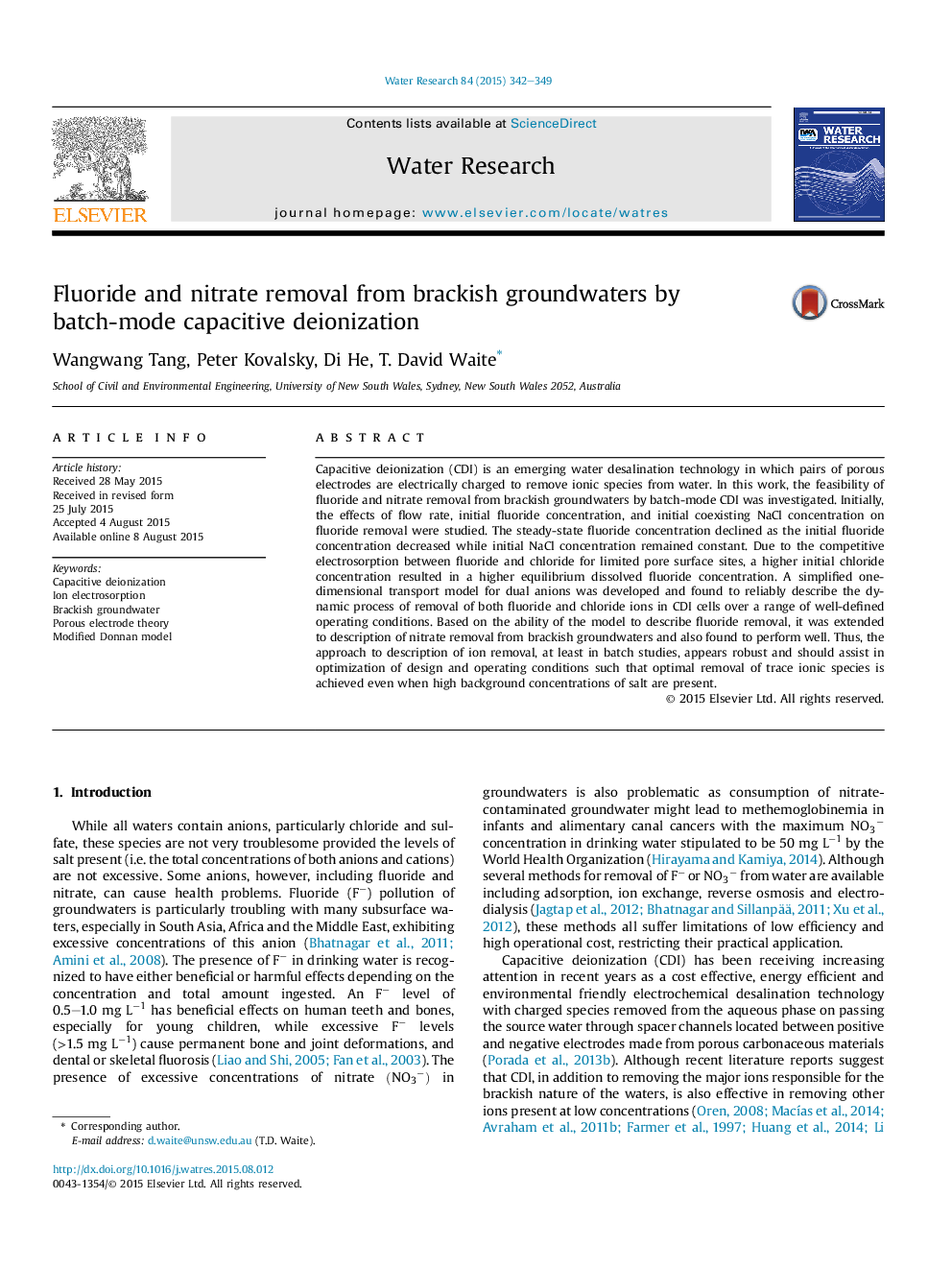| کد مقاله | کد نشریه | سال انتشار | مقاله انگلیسی | نسخه تمام متن |
|---|---|---|---|---|
| 4481102 | 1623084 | 2015 | 8 صفحه PDF | دانلود رایگان |
• F− and NO3−NO3− removal from brackish groundwaters by batch-mode CDI was investigated.
• A simplified one-dimensional transport model for dual anions was developed.
• The model reliably describes the dynamic removal of F− and NO3−NO3− in CDI cells.
• Optimization of design and operating parameters for CDI can be achieved.
Capacitive deionization (CDI) is an emerging water desalination technology in which pairs of porous electrodes are electrically charged to remove ionic species from water. In this work, the feasibility of fluoride and nitrate removal from brackish groundwaters by batch-mode CDI was investigated. Initially, the effects of flow rate, initial fluoride concentration, and initial coexisting NaCl concentration on fluoride removal were studied. The steady-state fluoride concentration declined as the initial fluoride concentration decreased while initial NaCl concentration remained constant. Due to the competitive electrosorption between fluoride and chloride for limited pore surface sites, a higher initial chloride concentration resulted in a higher equilibrium dissolved fluoride concentration. A simplified one-dimensional transport model for dual anions was developed and found to reliably describe the dynamic process of removal of both fluoride and chloride ions in CDI cells over a range of well-defined operating conditions. Based on the ability of the model to describe fluoride removal, it was extended to description of nitrate removal from brackish groundwaters and also found to perform well. Thus, the approach to description of ion removal, at least in batch studies, appears robust and should assist in optimization of design and operating conditions such that optimal removal of trace ionic species is achieved even when high background concentrations of salt are present.
Figure optionsDownload high-quality image (309 K)Download as PowerPoint slide
Journal: Water Research - Volume 84, 1 November 2015, Pages 342–349
